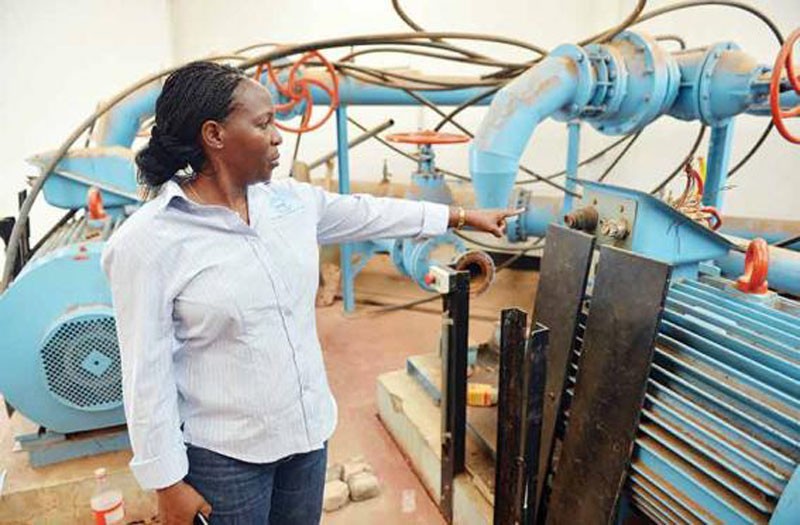Masama wellfields currently a white elephant
Monkagedi Gaothobogwe | Friday August 23, 2019 13:49


Moswaane claimed that there was no need for the construction of another pipeline from the same wellfields to Mmamashia, while water from the same sources was being pumped into the North-South pipeline already. It emerged that the Masama wellfields, which are capable of pumping over 90 million litres a day for the water-stressed greater Gaborone area, were currently sitting idle not pumping any drop of water being fed by Dikgatlhong and Ntimbale Dams.
Speaking on Radio Botswana’s morning show early this week, Water Utilities Corporation (WUC) acting CEO, Gasennelwe Senai, bemoaned that the Masama wellfields resources could be used to pump water for use for greater Gaborone villages of Thamaga, Moshupa, Kanye, Molepolole and surrounding villages all of which have now been connected to the North-South Water carrier, resulting in these new connections competing for the same water with Gaborone, for the first time in history.
According to Senai, with the North-South Water Carrier currently fed by the northern dams, WUC cannot pump more water into the same pipeline from Masama wellfields due to limited pressure, hence they urgently needed a separate pipeline – the 100km Masama Mmamashia project, to enable them to pump water via a separate line for the new connections in the greater Gaborone area.
Both WUC and ministry sources are open about the fact that the Masama wellfields can pump water into the North-South Water Carrier pipeline.
But they also argue that a dedicated water pipeline connecting Masama wellfields directly to Mmamashia water treatment plant would be ideal as opposed to the current scenario.
The scenario is that water from the Masama wellfield, is much cleaner than dam water. Raw water from Dikgatlhong and Letsibogo Dams is pumped into the North-South Water Carrier pipeline. The water needs to be treated before distribution to end users.
In their request for funding, the ministry told Cabinet that the implementation of the 100km Masama wellfield-Mmamashia pipeline as a separate line is expected to take less than 12 months to construct and realise beneficial use, and that in addition to a dedicated borehole water pipeline will not only cut down on cost for water treatment, but also enhance water supply downtime as borehole water is treated in a significantly more cost effective manner than raw water from the dams.
MP Moswaane also seems to have misled Parliament when he said the Masama 100km project funding would cripple Lobatse water works, from which the Masama project would be taking the bulk of the funds.
According to the ministry’s request for funding document, the Masama–Mmamashia project, though taking funds from the Lobatse water master plan, was necessary to prepare the water source for Lobatse, Rolong, Kanye, Moshupa, Thamaga, Molepolole and other connections.
The Lobatse water master plan, currently budgeted at P1,080,500,000, involves construction of a pipeline connecting Lobatse to Gaborone, construction of pump stations, upgrading water reticulation infrastructure in Lobatse.
The project is currently at design stage and the ministry says the construction phase may be deferred in order to make way for Masama wellfield-Mmamashia pipeline, which is the source of potable water to be transmitted to other areas including Lobatse.
The ministry’s document also says sequentially the Masama-Mmamashia project should be prioritised ahead of Lobatse, in order to optimise the beneficial use of Lobatse Water Master Plan implementation, adding that once the Masama-Mmamashia is complete, the water quota to Lobatse will increase.
The document further says the completion of the Masama-Mmamashia project would also benefit the Goodhope Sub-District water supply project since the source of supply to Goodhope is Lobatse.
The ministry further says the proposed Masama-Mmamashia project would result in improved supply of water to Kanye-Moshupa and Mononyane Molepolole Connection, as its demand is currently not catered for.
